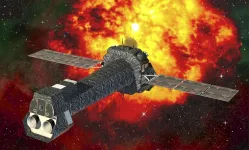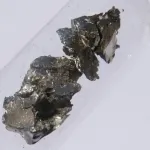UW researchers develop tool to equitably distribute limited vaccines
2021-01-15
(Press-News.org) MADISON, Wis. -- The demand for COVID-19 vaccines continues to outpace supply, forcing public health officials to decide who should be first in line for a shot, even among those in the same pool of eligible vaccine recipients.
To assist these efforts, researchers at the University of Wisconsin School of Medicine and Public Health and UW Health have developed a tool that incorporates a person's age and socioeconomic status to prioritize vaccine distribution among people who otherwise share similar risks due to their jobs. The tool helps identify those who are at greater risk of severe complications or death from COVID-19.
UW Health has implemented the prioritization algorithm to equitably provide limited doses to frontline health care workers. Other organizations can also access the freely available tool to guide their own vaccine distribution plans.
While the UW-Madison tool was designed with the first phase of eligible recipients in mind, it could be used as vaccine distribution expands to larger populations. As the eligible population increases, the gap between initial supply and demand could grow, making such prioritization tools even more helpful.
"Knowing we're going to have limited vaccine for some time, we wanted to develop an algorithm to equitably distribute vaccinations within these risk groups," says Grace Flood, the director of clinical analytics and reporting in the Office of Population Health at UW Health, who helped lead development of the tool along with the Health Innovation Program within SMPH.
In addition to age, the algorithm uses the Social Vulnerability Index to measure a person's susceptibility to severe COVID-19 based on where they live. The Centers for Disease Control and Prevention developed the SVI metric to help emergency responders identify which neighborhoods and towns will require the most support following natural disasters or public health emergencies.
The SVI incorporates 15 measures in four categories: socioeconomic status, housing composition and disability, minority status and language, and housing and transportation. Race and ethnicity have been closely correlated with higher COVID-19-related hospitalizations and mortality.
Flood and her team incorporated the SVI in accordance with a report by the National Academies of Sciences, Engineering and Medicine that recommended using the index to fairly distribute vaccines. Because Wisconsin publishes data about COVID-19 deaths at the census-tract level, "we were able to determine the relationship for risk of mortality between age and SVI," says Flood. This relationship allowed the researchers to verify that age and SVI combined provide an accurate estimate of an individual's risk.
Since age and SVI are readily available pieces of information about an individual and each contributes to COVID-19 risk, an algorithm that incorporates both elements may serve as one of the best ways to distribute vaccines until supply catches up to demand, says Flood.
The researchers have published their algorithm in the Annals of Family Medicine COVID-19 collection and made it available for download on the project's website.
INFORMATION:
--Eric Hamilton,
(608) 263-1986,
eshamilton@wisc.edu
ELSE PRESS RELEASES FROM THIS DATE:
2021-01-15
WHAT:
Scientists studying the body's natural defenses against bacterial infection have identified a nutrient--taurine--that helps the gut recall prior infections and kill invading bacteria, such as Klebsiella pneumoniae (Kpn). The finding, published in the journal Cell by scientists from five institutes of the National Institutes of Health, could aid efforts seeking alternatives to antibiotics.
Scientists know that microbiota--the trillions of beneficial microbes living harmoniously inside our gut--can protect people from bacterial infections, but little is known about how they provide protection. Scientists are studying the microbiota with an eye to finding or enhancing natural treatments to replace antibiotics, which ...
2021-01-15
A new study, led by a theoretical physicist at the U.S. Department of Energy's Lawrence Berkeley National Laboratory (Berkeley Lab), suggests that never-before-observed particles called axions may be the source of unexplained, high-energy X-ray emissions surrounding a group of neutron stars.
First theorized in the 1970s as part of a solution to a fundamental particle physics problem, axions are expected to be produced at the core of stars, and to convert into particles of light, called photons, in the presence of a magnetic field.
Axions may also make up dark matter - the mysterious stuff that accounts for an estimated 85 percent of the total mass of the universe, yet we have so far only seen its gravitational effects on ordinary matter. Even if the X-ray excess turns out not to be ...
2021-01-15
Computer simulations of cells evolving over tens of thousands of generations reveal why some organisms retain a disused switch mechanism that turns on under severe stress, changing some of their characteristics. Maintaining this "hidden" switch is one means for organisms to maintain a high degree of gene expression stability under normal conditions.
Tomato hornworm larvae are green in warmer regions, making camouflage easier, but black in cooler temperatures so that they can absorb more sunlight. This phenomenon, found in some organisms, is called phenotypic switching. Normally hidden, this switching is activated in response to dangerous genetic or environmental changes.
Scientists have typically studied this ...
2021-01-15
Scientists at the Institute of Physics of the University of Tartu have found a way to develop optical quantum computers of a new type. Central to the discovery are rare earth ions that have certain characteristics and can act as quantum bits. These would give quantum computers ultrafast computation speed and better reliability compared to earlier solutions. The University of Tartu researchers Vladimir Hizhnyakov, Vadim Boltrushko, Helle Kaasik and Yurii Orlovskii published the results of their research in the scientific journal Optics Communications.
While in ordinary computers, the units of information are binary digits or bits, in quantum computers the units are quantum bits or qubits. In an ordinary computer, information is mostly ...
2021-01-15
Tsukuba, Japan - Out with the old, in with the new, as the New Year's saying goes, but not where the marine environment is concerned. Researchers from Japan have discovered that ocean acidification keeps algal communities locked in a simplified state of low biodiversity.
In a study published on 11th January 2021 in Global Change Biology, researchers from the University of Tsukuba have revealed that as oceanic carbon dioxide levels rise, the biodiversity and ecological complexity of marine algal communities decline.
Ocean acidification is the continuing increase in the acidity of the Earth's oceans, caused by the absorption of atmospheric carbon dioxide (CO2). ...
2021-01-15
The celebrations in the 250th anniversary of the birth of Ludwig van Beethoven would not be the same without Herbert von Karajan's brilliant performances conducting Beethoven's memorable symphonies. The execution of any musical symphony is a hugely difficult task, demanding very significant skills on the part of each individual musician - but perhaps the most difficult task lies with the conductor who has to orchestrate the musicians into making the music cohesively come alive and speak to our deepest emotions.
In many ways the human brain is like an orchestra, where different regions perform very different types of processing, such ...
2021-01-15
A new study conducted at the University of Turku, Finland, shows that patients with a schizophrenia spectrum disorder have an increased risk of Parkinson's disease later in life. The increased risk may be due to alterations in the brain's dopamine system caused by dopamine receptor antagonists or neurobiological effects of schizophrenia.
The record-based case-control study was carried out at the University of Turku in collaboration with the University of Eastern Finland. The study examined the occurrences of previously diagnosed psychotic disorders and schizophrenia in over 25,000 Finnish Parkinson's disease (PD) patients ...
2021-01-15
Tsukuba, Japan - A team of researchers lead by the University of Tsukuba have created a new theoretical model to understand the spread of vibrations through disordered materials, such as glass. They found that as the degree of disorder increased, sound waves traveled less and less like ballistic particles, and instead began diffusing incoherently. This work may lead to new heat- and shatter-resistant glass for smartphones and tablets.
Understanding the possible vibrational modes in a material is important for controlling its optical, thermal, and mechanical properties. The propagation of vibrations in the form of sound of a single ...
2021-01-15
Scientists of Tomsk Polytechnic University jointly with colleagues from the University of Lille (Lille, France) synthetized a new material based on reduced graphene oxide (rGO) for supercapacitors, energy storage devices. The rGO modification method with the use of organic molecules, derivatives of hypervalent iodine, allowed obtaining a material that stores 1.7 times more electrical energy. The research findings are published in Electrochimica Acta academic journal (IF: 6,215; Q1).
Photo: modified rGO supercapacitor electrodes
A supercapacitor is an electrochemical device for storage and release ...
2021-01-15
Bone turnover markers (BTMs) in blood and urine are useful tools in monitoring osteoporosis treatment effects and may be useful for improving patient adherence.
In 2011, a Joint Committee on Bone Metabolism of the International Osteoporosis Foundation (IOF) and the International Federation of Clinical Chemistry and Laboratory Medicine (IFCC) designated Procollagen type I N-propeptide (PINP) and the C-terminal telopeptide of type I collagen (β-CTX) in blood as reference bone turnover markers for bone formation and bone resorption, respectively, in osteoporosis. However, the effective clinical implementation of ...
LAST 30 PRESS RELEASES:
[Press-News.org] UW researchers develop tool to equitably distribute limited vaccines




